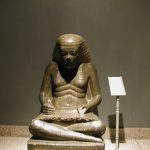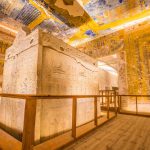Bichrome IV Ceramic Jug
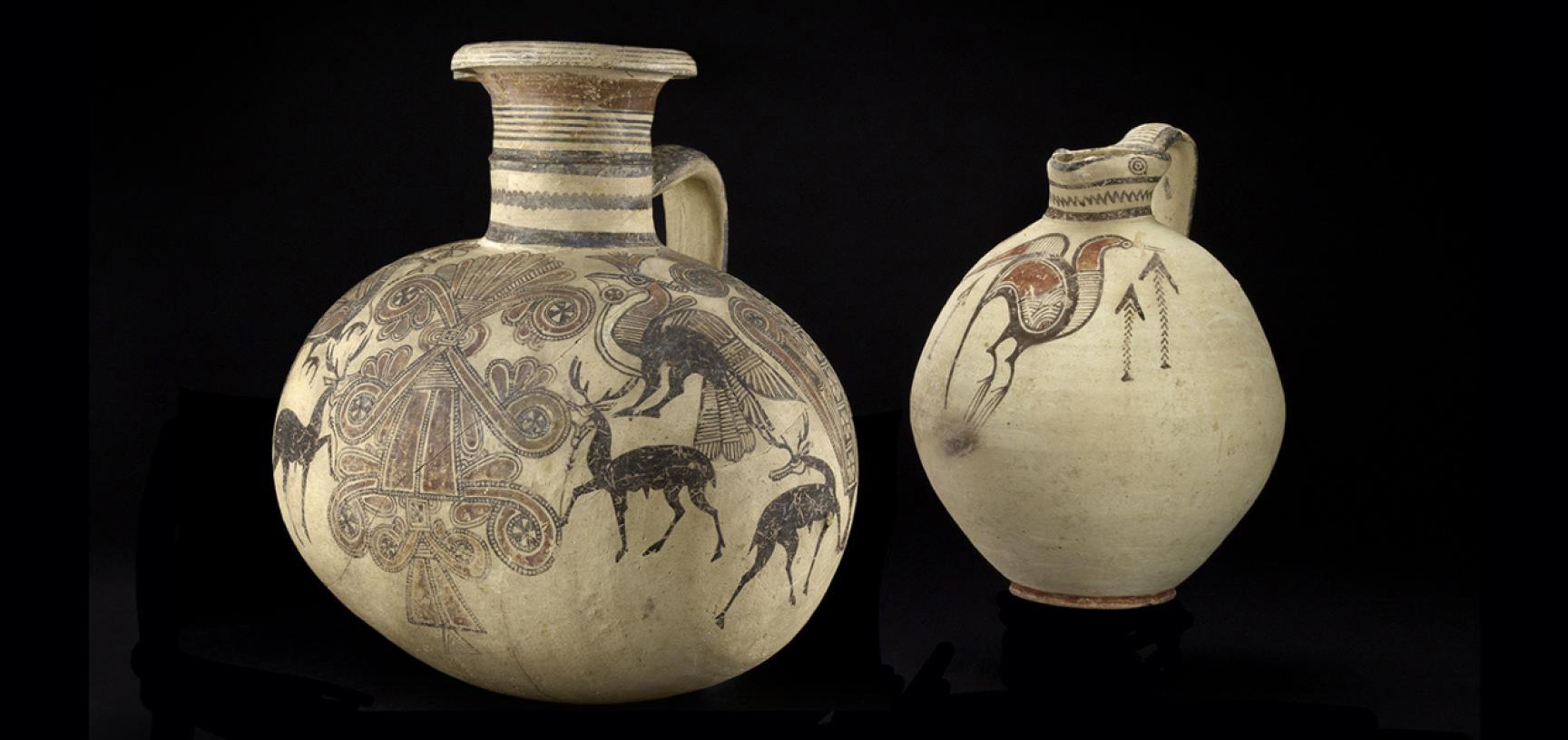
Bichrome IV ceramic barrel-shaped Cypro-Phoenician jug with sacred tree, stags, crested birds, and lotus flowers, in a variation of the Free Field Style. From Larnaka, Cypro-Archaic I Period (750–600 BC), Cyprus.
This vessel is an unusually shaped and richly decorated example of bichrome ware, a type of pottery characterized by motifs and patterns painted in black and red on a light background.
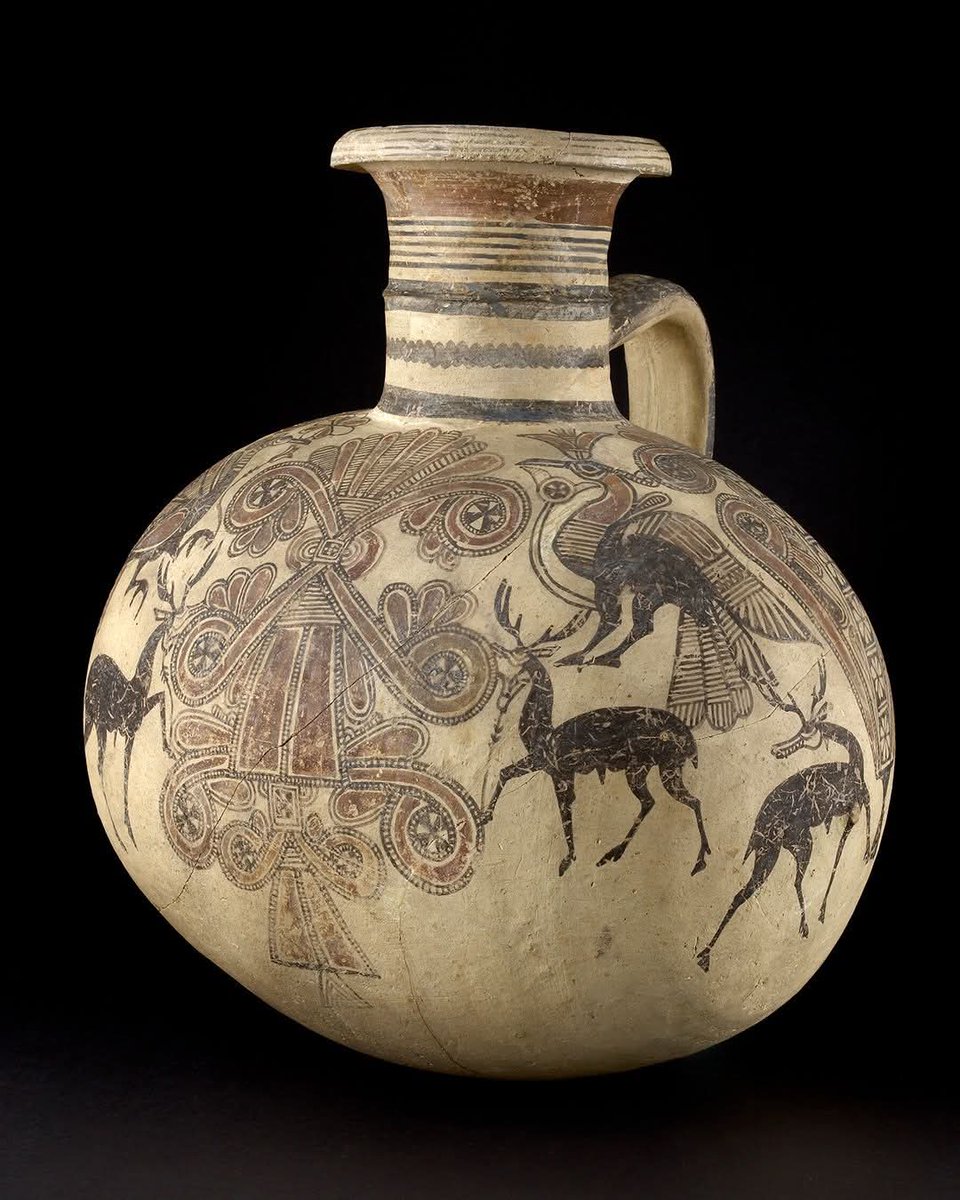
On the front of the jug, opposite the handle, appears a stylized tree with curling branches and palmettes—commonly known as the “tree of life” in the Eastern Mediterranean and the Middle East. Flanking the tree are stags and crested birds. A simpler version of this motif, without the birds, is repeated on either side of the jug, while another tree appears beneath the lower end of the handle.
Such motifs symbolize fertility, vegetation, and animal life, all of which depended on rainfall and the availability of water—crucial for the livelihood and prosperity of ancient Cypriots. It is therefore fitting that vessels bearing these designs were typically used as jugs for water or wine.
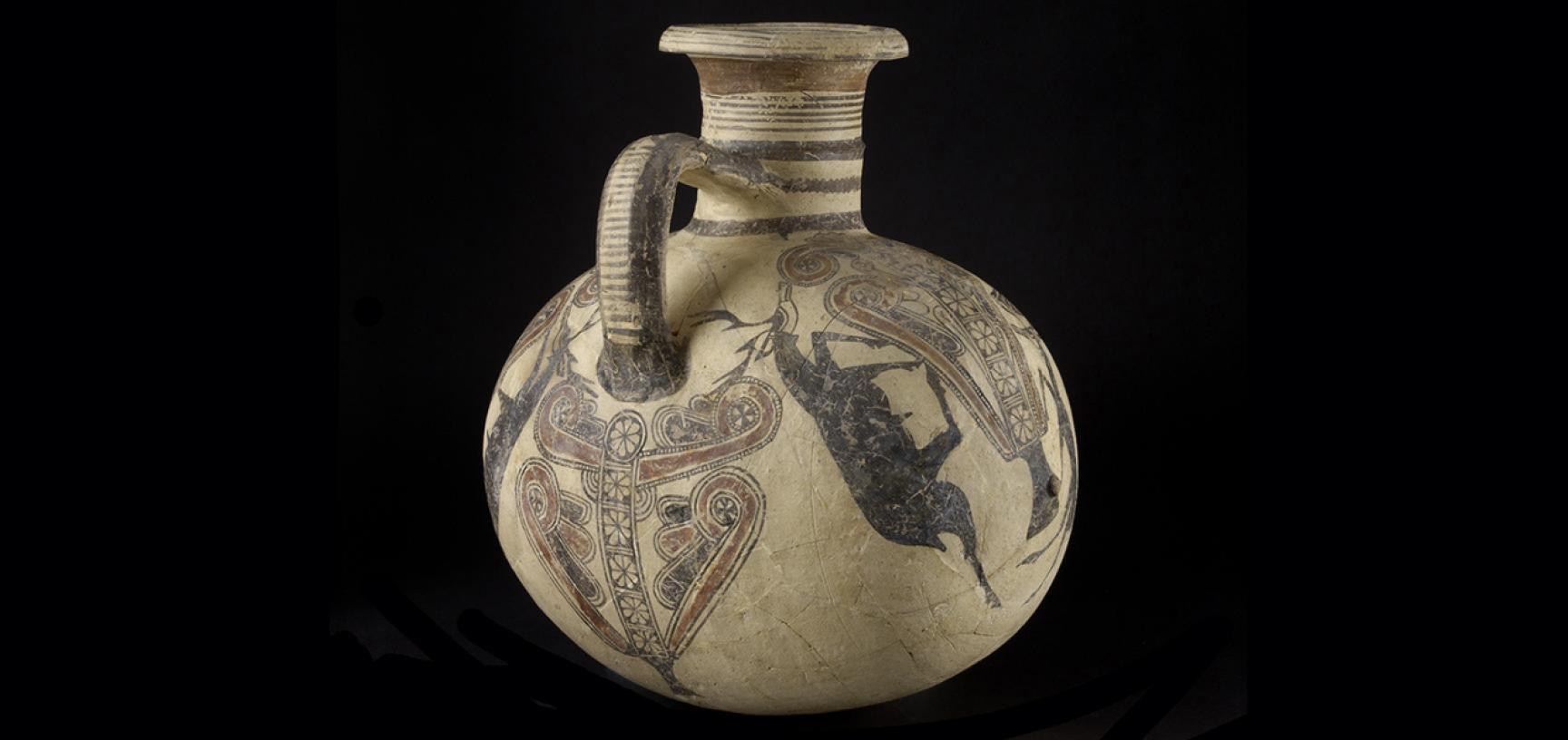
The imagery also reflects cultural exchange, since similar motifs appear across neighboring regions, particularly in the Middle East. Their presence on this jug underscores the close trading, diplomatic, and cultural ties between Cyprus and its Mediterranean neighbors, especially Phoenicia (modern Lebanon).
The jug, discovered in a tomb, has been fully restored from many fragments. It may have been intentionally broken during the burial ritual in the 7th century BC, or alternatively damaged during 19th-century excavation.
Dimensions: H. 28.5 cm, W. 27.9 cm
© Ashmolean Museum







